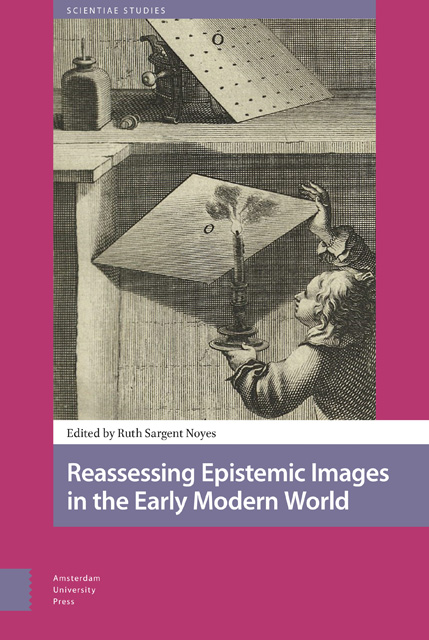Book contents
- Frontmatter
- Dedication
- Table of Contents
- 1 Prologue: For a Metaphorology of Engraving: From Epistemic Images to an Imaged Epistemology
- 2 Introduction: Pittura filosofica: Etching Galileo’s Sunspots and the Discursive Field of Early Modern Epistemic Images
- Part 1 Approaches to Print Matrices
- Part 2 Imprints as Instruments
- Part 3 Imprint, Knowledge, and Affect
- Bibliography
- Index
3 - Sequencing Vesalius’s De Humani Corporis Fabrica
Published online by Cambridge University Press: 15 June 2023
- Frontmatter
- Dedication
- Table of Contents
- 1 Prologue: For a Metaphorology of Engraving: From Epistemic Images to an Imaged Epistemology
- 2 Introduction: Pittura filosofica: Etching Galileo’s Sunspots and the Discursive Field of Early Modern Epistemic Images
- Part 1 Approaches to Print Matrices
- Part 2 Imprints as Instruments
- Part 3 Imprint, Knowledge, and Affect
- Bibliography
- Index
Summary
Abstract
This chapter examines the deterioration of the woodblocks in several editions of Andreas Vesalius’ De humani corporis fabrica, the first fully illustrated anatomy atlas. Comparison of different woodcuts in the Fabrica reveals a consistent pattern of degradation across copies: perfect impressions of the woodblocks were selected to be bound to form a first-state book; impressions of the damaged woodblocks were bound together to form a later-state volume. This finding suggests the early modern print shop was not as disorganised as Adrian Johns and other historians have claimed in recent years.
Keywords: printing history, history of the book, history of anatomy, visual studies of science, Andreas Vesalius
Introduction
A plethora of scholarship from recent decades examines the complex processes whereby an early modern book came into existence. While printing obviously speeded up the production of books compared to the manuscript era, a print run of hundreds (let alone thousands) still required many months. During these months, printers could still fiddle with the format of the book, adding accidental and intended changes to text and images at the behest of correctors, authors, and typesetters. Sometimes, as the first sheets of a volume were being printed at full speed, the author was still finishing the text’s concluding section, writing up a fulsome epistle dedicatory, assembling the index, and composing an errata list of typographical errors. Arguably, the complexities of these processes made each exemplar of a printed book unique. They can give the impression that the production of books was a messy and unstable enterprise in the early modern world, and not the orderly business of standardized twentiethcentury production. Our chapter contributes to this historiographical debate by examining the temporal sequence of printing, asking whether exemplars produced at the beginning and end of the process differed from each other.
A well-established distinction between the different states of woodcuts, engravings, and etchings exists in the field of art history. The hundreds of sheets that printmakers pulled from the same copperplate or woodblock can often be grouped into separate and distinct states based either on the matrices’ deterioration, or on the artist’s intervention, as in the case of Rembrandt, who obsessively reworked his etchings throughout his career.
- Type
- Chapter
- Information
- Reassessing Epistemic Images in the Early Modern World , pp. 59 - 82Publisher: Amsterdam University PressPrint publication year: 2022



